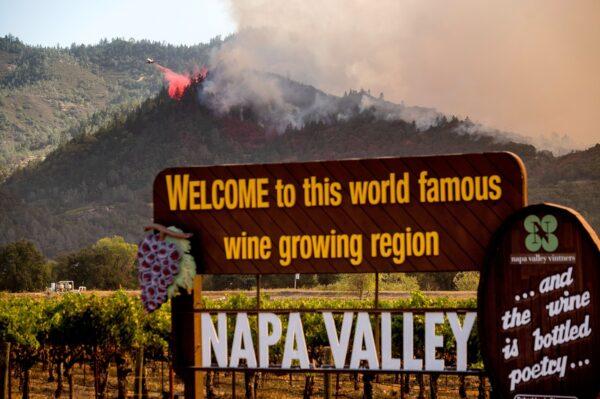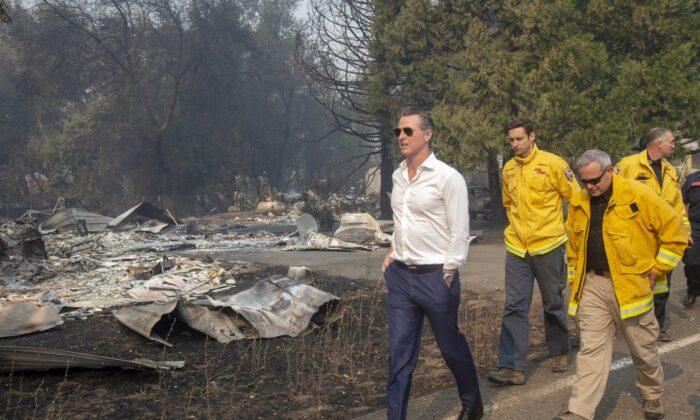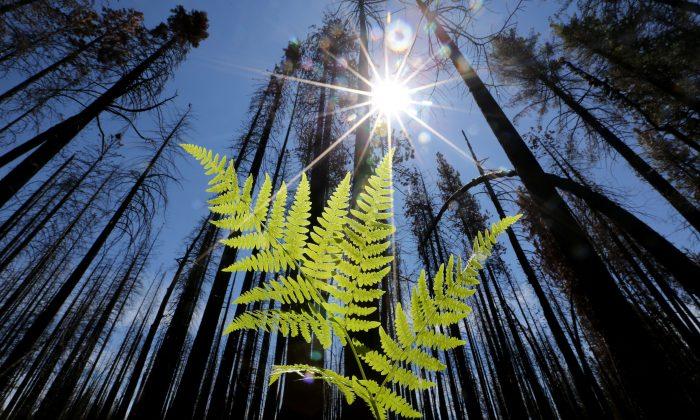Newsom, a Democrat, also said he hopes California’s efforts in what he termed an “existential fight” with climate change will serve as an example to other U.S. states and nations around the world.
“Once again, California is taking on the mantle of global climate leadership and advancing bold strategies to fight climate change,” Newsom said at a press conference announcing the move.
“The science is clear that, in our existential fight against climate change, we must build on our historic efforts in energy and emissions and focus on our lands as well,” he said. “California’s beautiful natural and working lands are an important tool to help slow and avert catastrophic climate change, and today’s executive order provides important new tools to take on this existential threat.”
Newsom’s order directs the state’s policymakers to develop solutions that would sequester carbon in soils and vegetation on state lands, thus removing it from the atmosphere.

“This is an international movement,” Newsom told journalists at the press conference near the town of Winters in Solano County. “California, as the fifth-largest economy in the world, needs to flex its muscles, needs to assert itself and to advance that cause, not only as it relates to its global impacts but hopefully jump-start similar efforts in other states across this country.”
Newsom said that one of his goals was that of “advancing a cause that we hope will impact not just the rest of the country, but parts all across the globe.”
Newsom said his goal is to align California’s state policy with the “30x30” plan proposed by the Campaign for Nature advocacy group. The 30x30 plan involves state and nations pledging to conserve 30 percent of their lands and waters by the year 2030. The organization claims that worldwide, only 15 percent of land and 7 percent of oceans are protected.
The Campaign for Nature campaign is the brainchild of the Washington-based Wyss Foundation, which receives much of its funding from the Swiss-born liberal philanthropist and billionaire, Hansjörg Wyss.
Newsom’s order was welcomed by a number of environmental organizations and political figures.
Collin O’Mara, president and CEO of the National Wildlife Federation, said Newsom’s commitment was “a watershed moment” in what he described as a movement to combat climate change, improve biodiversity, and restore lands and waters. O'Mara said the plan would also create jobs.
“I applaud Gavin Newsom for setting the goal of conserving 30 percent of land and water resources by 2030,” wrote Sen. Dianne Feinstein (D-Calif.) on Twitter. “We need to meet strong goals like this in order to combat climate change and preserve California’s rich biodiversity.”
Criticism
California’s governor has received scathing criticism from President Donald Trump for what the president says is poor forest management in California, while Environmental Protection Agency Administrator Andrew Wheeler recently questioned the legality of Newsom’s proposed 2035 ban on the sale of gas-powered cars.Bates listed costs in the hundreds of millions of dollars, ambiguity, the lack of identified funding sources, and regulatory overreach as reasons for the state Legislature’s opposition to similar bills.
“With the stroke of a pen, the Governor has ignored all of those concerns,” Bates said.





